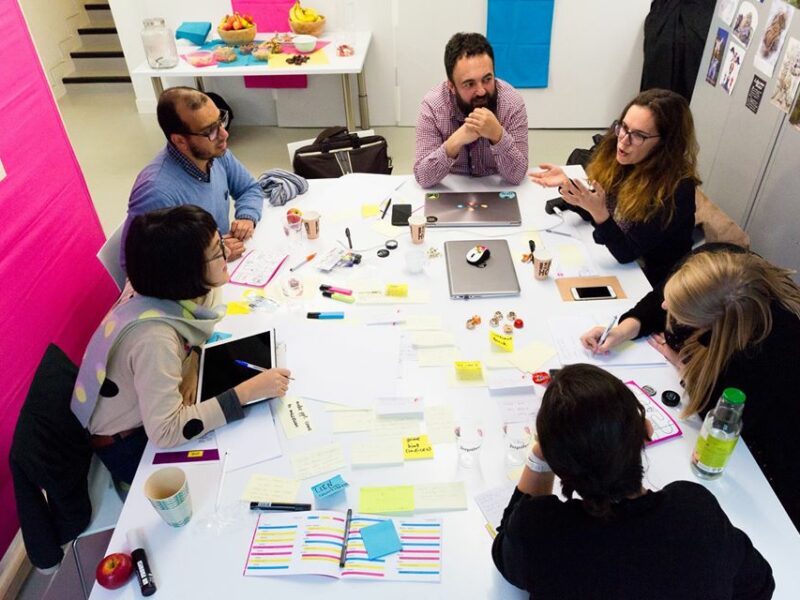In a professional realm where confidence can be a game-changer, we’re about to explore how to connect and co-create in our workplace. As William James once said,
“Most people live in a restricted circle of potential.”
But what if we told you that you could break free from those restrictions and unlock your full potential? Let’s dive into the art of connecting, collaborating, and cultivating confidence at work.
What is Connect & Co-Create?
The ability to connect and co-create is a valuable skill in the workplace. It’s not just about individual success; it’s about working collaboratively to achieve common goals. The art of connecting with your colleagues, superiors, and subordinates can lead to productive collaborations and innovative solutions. It’s all about building bridges and fostering a culture of co-creation.
Be Aware of the Mindset
Transaction analysis is a powerful tool for understanding human interactions in the workplace. By being aware of transactional patterns, you can navigate conversations and relationships more effectively. It helps you recognize when you’re in a “parent,” “adult,” or “child” mode during interactions, allowing for more constructive communication and resolving conflicts.
For example, in a work setting, maintaining an “adult” mode, which is rational and objective, can enhance problem-solving and decision-making. Understanding transactional patterns enables you to communicate effectively with colleagues.
How to do:
- Self-awareness: Understand your transactional patterns and recognize when you might be operating in “parent,” “adult,” or “child” modes.
- Adapt your communication: Tailor your interactions to be more effective by understanding the transactional dynamics at play.
- Promote healthy interactions: Encourage colleagues to become aware of their communication styles and adapt for better understanding and cooperation.
Managing the State of Mind
The state of mind can often be a stumbling block in the workplace. Learning how to manage it effectively is crucial for maintaining harmonious relationships. It involves a delicate balance of recognizing individual achievements while promoting teamwork.
“65% of respondents believed that the state of mind and self-interest were the biggest barriers to effective teamwork.”
– Deloitte ( Organizational Performance Study)
By acknowledging each person’s contributions and managing the state of mind with grace, you can create an environment that encourages cooperation and mutual respect.
A real-life example is Abraham Lincoln, who appointed a team of political rivals to his cabinet, stating, “We needed the strongest men of the party in the Cabinet. I had looked the party over and concluded that these were the very strongest men. Then, I had no right to deprive the country of their services.”
How to do:
- Acknowledge individual achievements: Recognize and celebrate the contributions of team members.
- Promote humility: Encourage a humble attitude that values the team’s success over personal recognition.
- Facilitate feedback: Create an environment where constructive feedback is welcomed and used for personal and professional growth.
Agree to Disagree
Diversity of thought is a powerful force in the workplace. It’s natural for people to have different opinions and perspectives. Embracing the philosophy of “agree to disagree” can foster a culture of open dialogue and healthy debate. It’s about respecting differing viewpoints while finding common ground to move forward effectively.
When an agreement isn’t possible, find common ground to move forward. Promote a culture where diversity of thought is accepted and celebrated for its potential to drive innovation.
Recognizing the value of constructive disagreement can lead to more informed choices. A case study involving Elon Musk’s leadership at SpaceX demonstrates the power of embracing differing viewpoints to innovate.
How to do:
- Active listening: Pay attention to differing viewpoints without judgment and ask questions for clarity.
- Find common ground: Identify shared goals or values that can bridge gaps in perspectives.
- Respect diversity: Understand that differences can lead to more robust decision-making and problem-solving.
Stay on Track!

The workplace thrives on productivity and results. Getting things done efficiently is a key aspect of professional success. By mastering this skill, you not only achieve your objectives but also contribute to the overall success of your team and organization.
Use time management techniques to stay organized and focused. Clear communication, goal setting, and tracking progress are essential. Embrace tools and strategies that help you streamline your work processes and meet your objectives.
How to do:
- Set clear goals: Define objectives with specific, measurable, achievable, relevant, and time-bound (SMART) criteria.
- Prioritize tasks: Identify high-impact activities and allocate your time and resources accordingly.
- Time management: Use techniques like the Pomodoro method or time-blocking to enhance productivity.
We Are in it Together!

Teamwork is the backbone of a successful workplace. Recognizing that you are part of a larger team with a shared purpose is essential. It’s about supporting your colleagues, collaborating on projects, and celebrating collective achievements. When everyone understands the importance of unity, the workplace becomes a more cohesive and productive environment.
How to do:
- Team building: Organize team-building activities and exercises to foster stronger bonds.
- Recognize teamwork: Acknowledge and reward collaborative efforts and celebrate team achievements.
- Share a common purpose: Ensure everyone understands and aligns with the organization’s mission and values.
Managing Office Politics
Office politics can be both a challenge and an opportunity. Understanding the dynamics at play and managing office politics effectively can help you navigate the corporate landscape. It’s about building alliances, staying true to your values, and using your influence for the greater good of your team and organization.
When Tim Cook took over as Apple’s CEO after Steve Jobs, he had to navigate internal politics while preserving the company’s innovative spirit. He maintained a culture of transparency, stating, “The most important data is the people in this company. The most important data is how the employees feel about the company.”
How to do:
- Build alliances: Cultivate relationships with colleagues that can support your professional goals.
- Stay true to values: Uphold your integrity and ethics, even in the face of political pressures.
- Positive influence: Use your influence to create a positive impact on team dynamics and organizational culture.
“Clarity in Communication is 1000 IQ Points”
Verbal Communication Is Good, Writing Down Is the Best!
Effective communication is a cornerstone of success in the workplace. While oral communication is important, writing can provide clarity, accountability, and a documented record. Whether it’s project instructions, agreements, or feedback, putting it in writing helps reduce misunderstandings and ensures everyone is on the same page.
How to do:
- Clarity in communication: For important instructions or agreements, use written documentation to avoid misunderstandings.
- Accountability: Keep records of decisions and agreements, so everyone can refer back to them when needed.
- Professionalism: Written communication provides a more formal and professional record of interactions.
Managing Office Stress
In a fast-paced work culture, stress is a common companion. Learning how to manage office stress is vital for your well-being and productivity. Techniques like time management, mindfulness, and work-life balance can help you stay composed and focused, even during challenging times.
Remember to stay true to your values and align your actions with the best interests of your team and organization. Understand the formal and informal power structures, and use your influence for the collective good.
How to do:
- Stress awareness: Recognize the signs of stress in yourself and your colleagues.
- Time management: Efficiently allocate your time to reduce the feeling of being overwhelmed.
- Well-being practices: Encourage breaks, mindfulness exercises, and activities that help manage stress.
Creating a Happy Workplace
A happy workplace is a productive workplace. Recognizing the importance of employee well-being and job satisfaction is a win-win for both individuals and the organization. It involves fostering a positive work culture, providing growth opportunities, and acknowledging the efforts of your team members. A happy workplace is a place where people thrive, collaborate, and produce outstanding results.
How to do:
- Positive culture: Promote a culture of appreciation, respect, and support among colleagues.
- Employee recognition: Acknowledge and reward employee achievements and contributions.
- Personal growth: Provide opportunities for professional development and career advancement within the organization.
It is not about self-designed goals, it’s about the relationships you build, the work culture you help create, and the impact you leave on your colleagues and organization. Embrace these principles, and you’ll not only succeed professionally but also find fulfillment in your daily work life. Your goal of achieving success and educating upcoming professionals in the industry is not just a dream but a path you can walk confidently. Your journey is not solitary; it’s a collective effort towards a brighter, more productive future.
https://journals.sagepub.com/doi/10.5153/sro.1978
https://www.linkedin.com/pulse/connect-collaborate-co-create-dawn-lyle
https://blog.jostle.me/blog/10-ways-to-connect-people-in-your-workplace
https://www.interactsoftware.com/blog/engage-employees-with-these-6-examples-of-co-creation/
Written By: Jimmy Jain
Edited By: Afreen Fatima
Society of Design Thinking Professionals









